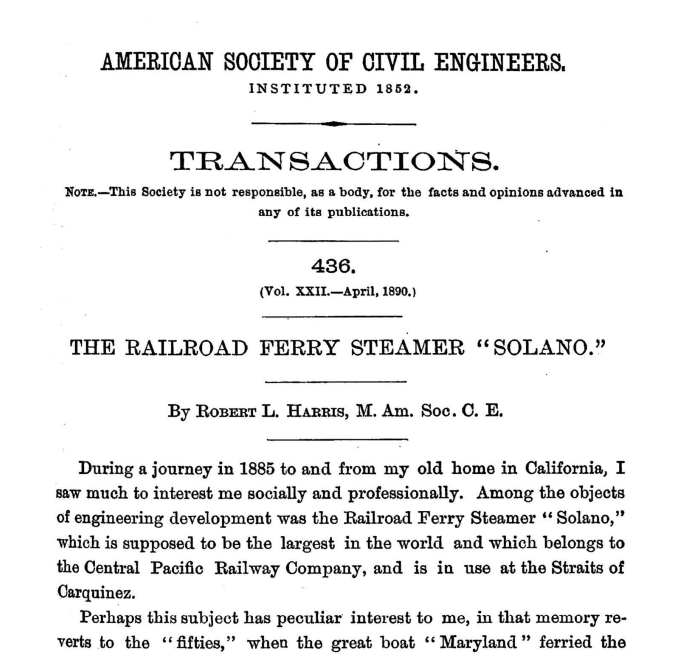The Railroad Ferry Steamer “Solano”
Year: 1890
By Robert L. Harris, M. Am. Soc. C.E.
Harris presents the design, construction and early performance of the Solano—then the world’s largest railroad-car ferry—built for the Central Pacific to carry entire freight or passenger trains across California’s Carquinez Strait. He details its 424-ft wooden hull, quadruple-track deck, twin independent 60-in.–stroke beam engines, 30-ft paddle wheels, eight oil-fired Scotch boilers, Pratt-truss under-framing and novel balanced-rudder hydraulic steering. Brown’s notes explain the hinged, counter-weighted aprons and submerged pontoons that let the 154-ton loading ramps rise and fall with the 9-ft tides while holding the vessel against swift 8 mph currents. Operational data compare petroleum to coal firing and show the crossing—about one mile—takes nine minutes, letting through trains lose scarcely fifteen minutes. The paper situates Solano within a lineage of American rail ferries and argues that neither bridge nor tunnel could then match her efficiency for trans-strait traffic.
 View publication
View publication